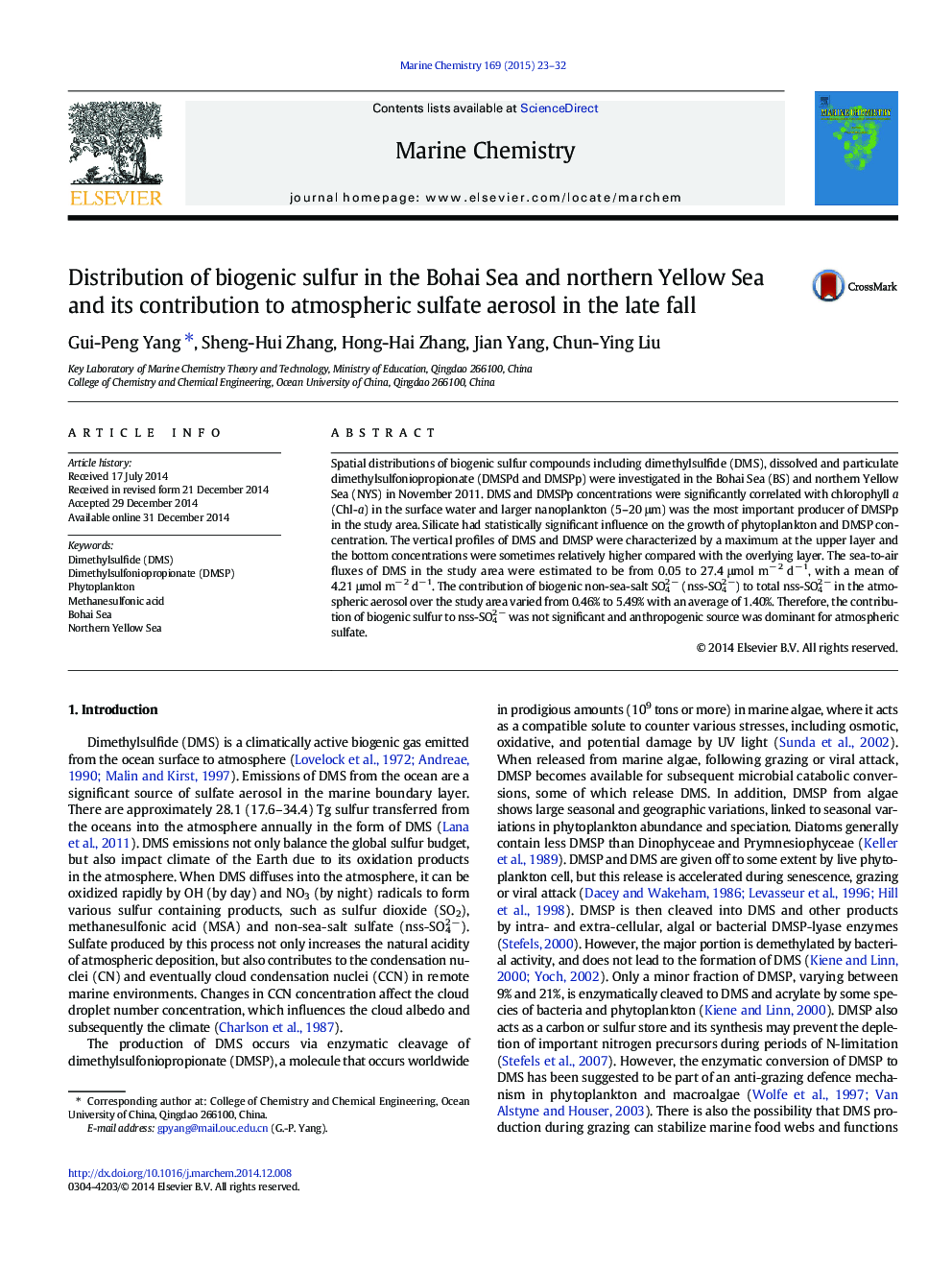| Article ID | Journal | Published Year | Pages | File Type |
|---|---|---|---|---|
| 1262783 | Marine Chemistry | 2015 | 10 Pages |
•Biogenic sulfur concentrations exhibited obvious spatial variations in the BS and NYS.•Silicate had an important influence on the DMSP concentration.•A significant correlation was found between the DMS and chlorophyll a concentrations.•Larger nanoplankton was the primary contributor of DMSPp in the BS and NYS.•Atmospheric pollution increased sulfate aerosol concentrations over the study area.
Spatial distributions of biogenic sulfur compounds including dimethylsulfide (DMS), dissolved and particulate dimethylsulfoniopropionate (DMSPd and DMSPp) were investigated in the Bohai Sea (BS) and northern Yellow Sea (NYS) in November 2011. DMS and DMSPp concentrations were significantly correlated with chlorophyll a (Chl-a) in the surface water and larger nanoplankton (5–20 μm) was the most important producer of DMSPp in the study area. Silicate had statistically significant influence on the growth of phytoplankton and DMSP concentration. The vertical profiles of DMS and DMSP were characterized by a maximum at the upper layer and the bottom concentrations were sometimes relatively higher compared with the overlying layer. The sea-to-air fluxes of DMS in the study area were estimated to be from 0.05 to 27.4 μmol m− 2 d− 1, with a mean of 4.21 μmol m− 2 d− 1. The contribution of biogenic non-sea-salt SO42 − (nss-SO42 −) to total nss-SO42 − in the atmospheric aerosol over the study area varied from 0.46% to 5.49% with an average of 1.40%. Therefore, the contribution of biogenic sulfur to nss-SO42 − was not significant and anthropogenic source was dominant for atmospheric sulfate.
